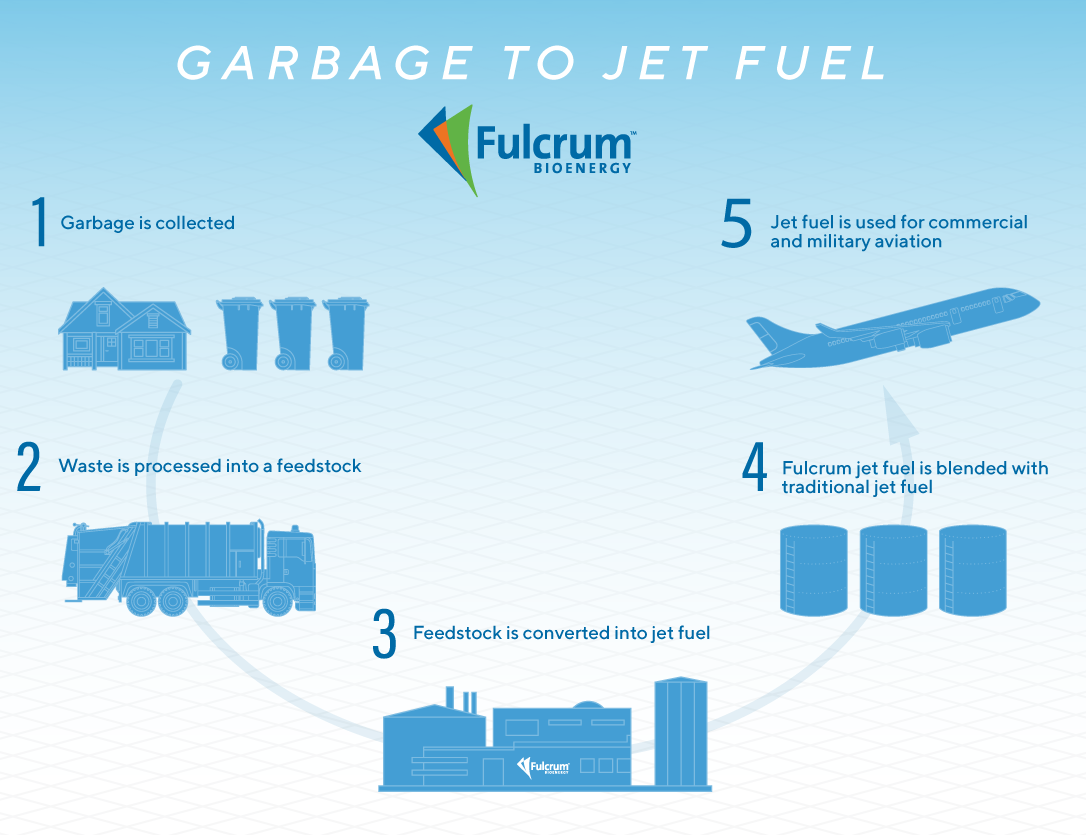Low-carbon fuel innovation and the California policy environment
The transportation sector, and particularly aviation and maritime transport, pose unique challenges in the transition to lower-carbon energy sources. However, California’s Low Carbon Fuel Standard has ushered in significant investment and innovation and the state is leading the way in advanced fuels.
In an interview with Randolph Bell, director of the Atlantic Council Global Energy Center, E James Macias, chief executive officer of Fulcrum BioEnergy, discussed how California’s consistent, forward-looking policy environment has turned it into world leader in clean innovation.
Q: First of all, what does Fulcrum BioEnergy do?
Macias: Fulcrum has developed a process to turn household garbage or municipal solid waste into low-carbon renewable transportation fuels: jet fuel and diesel fuel.
Q: And how does the process work to make it lower carbon than more traditional petroleum?
Macias: We take garbage that ordinarily would be landfilled. We do not compete with recycling—this is the garbage that does not go into the recycling bin, but is thrown into the landfill. Even in the cities and communities with the best recycling programs, as much as 50 percent of the garbage that still ends up in landfills is rich in carbon and hydrogen. We take that garbage and run it through a sorting process where we pull out all the materials that are rich in carbon and hydrogen and then run it through a pressurized gasification process to produce a very clean, high energy, hydrocarbon gas. Then, using standardized gas to liquid technologies, we convert that hydrocarbon gas into liquid fuel.

Graphic courtesy of Fulcrum BioEnergy.
Q: Why is this important for California and for the world?
Macias: Transportation by sector is one of the largest carbon emitters. And it is one of the most difficult because it is mobile, not stationary like factories or plants, so it is more difficult to regulate and manage carbon reduction. Because we’re taking garbage that would ordinarily be landfilled—and greenhouse gases from landfills are some of the highest—on a lifecycle basis, we reduce carbon emissions by more than 80 percent compared to traditional fossil fuels. Because we use municipal solid waste, we can do it at a cost that’s very competitive with fossil fuels.
Q: Why did you do this in California?
Macias: California has the strongest and the most advanced market to reduce carbon emissions. The low carbon fuel standard is a strong program that was enacted by California years ago and has been consistent and even been strengthened over time. It has withstood legal challenges and political challenges, so California has become a very attractive market for low-carbon fuel. Because of the consistent policy, we have been able to attract investment and to produce fuel that can be sold here.
Q: What is it about the policy environment in California that encourages green energy innovation and investment?
Macias: Well the low carbon fuel standard, originally the AB 32, established that California was going to level and then reduce carbon emissions in transportation and do so in a manner that doesn’t restrict or damage the economy. And I think California’s economy has shown that you can reduce carbon emissions without negatively impacting the economy. Most importantly for companies like ours and for investors, it has clear and consistent policy to signal where the market is going. Additionally, California established a very robust market for carbon trading has been very fundamental for the program.
Q: How does the back and forth of federal policy impact your business?
Macias: Federal policy has been less consistent. The renewable fuel standard has stood up politically and has not fundamentally changed over the years. However, there has been a lot of noise and a lot of inconsistent administration of the policy. Support grows and then it comes under attack. For companies like us, that produces headwinds or tailwinds. And certainly, the tailwinds are helpful, but having inconsistent policy at a federal level is not helpful for attracting significant investment to innovate and produce new clean energy sources.
Q: What do you think that means for overall US competitiveness? On the one hand you have California, which has shown leadership in policy and policy consistency. On the other hand, you have inconsistency at the federal level.
Macias: If the US economy has shown anything, it shows phenomenal innovation, creativity, and an ability to execute on new processes, new technologies, new programs—to move forward and execute. It’s a combination of technology innovation, good business sense, entrepreneurialism, and a strong capital market structure. The US could truly be an outstanding leader in clean energy with more consistent policy. I think what’s been done has been in spite of the inconsistent policy. Solar and wind is growing, but at a much slower pace than what it would have been with more stable policy, instead of the start and stop, jerky federal policy.
On the fuel side, you’re seeing that. There’s a lack of clarity on goals, support, and eagerness for advanced biofuels. This has slowed down innovation, investment, and advancement. Now California is picking up that slack. Global investors and global companies want to understand what’s going on in California and are looking for ways to enter the market and to supply low-carbon fuel into California. We see producers in South America and Asia looking at how they can get their fuel into California to support this growing market.
E James Macias is chief executive officer of Fulcrum BioEnergy. You can follow them on Twitter @FulcrumBio
Image: Fulcrum BioEnergy's Feedstock Processing Facility (photo by Fulcrum BioEnergy).
